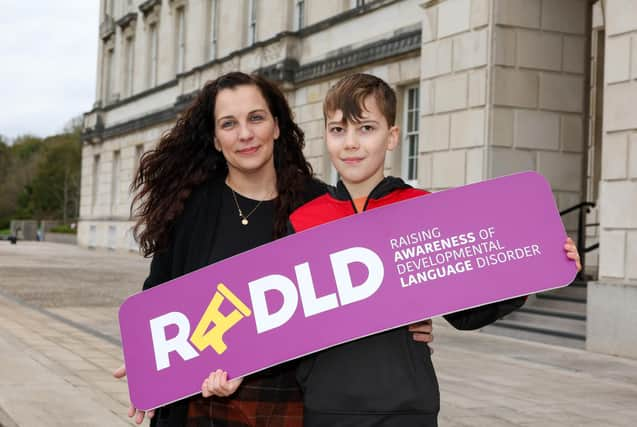Developmental Language Disorder – the hidden communication challenge holding pupils back


Ruth Sedgewick, head of the Royal College of Speech and Language Therapists (RCSLT) in Northern Ireland said: “Developmental Language Disorder (DLD) is a hidden speech, language and communication need that significantly affects how children understand and use language.
“DLD can impact a child’s educational, personal and emotional development - knocking their confidence and ability to interact with others, and lead to behavioural and mental health issues.
Advertisement
Hide AdAdvertisement
Hide Ad“At a critical stage in a child’s education, this can present a major setback.
"Without the right support, some children may struggle to get back on track, affecting their academic success, and ultimately their future employment opportunities.”
The RCSLT has joined forces with the Education Authority (EA) for Northern Ireland’s Language and Communication Service (LCS) to launch new resources for post primary teachers to help them recognise Developmental Language Disorder (DLD) in the classroom.
Ruth Sedgewick explained how low awareness of the disorder means it can be a hidden problem in the classroom.
Advertisement
Hide AdAdvertisement
Hide Ad“DLD remains relatively unknown, even by those working with children and young people. In some cases it can be easily identified, but often a child or young person with DLD is very skilled at masking any difficulties,” she said.
“Given the low level of awareness and the huge impact DLD can have, we’re delighted to launch these new teacher resources.
"We hope teaching staff will become more aware of the hidden nature of DLD and how it can present in the classroom, that they will be able to identify children with the communication difficulty, and seek help from a speech and language therapist to assess the child, diagnose the disorder and provide appropriate specialist support.”
NI mum Sue McBride and her son Corey,11, are raising awareness of Developmental Language Disorder
Advertisement
Hide AdAdvertisement
Hide Ad“I first noticed Corey had difficulties when I was working at home with him during lockdown,” said Sue. "He had difficulty retaining information, he couldn’t explain what he was doing, finding the words. It was only then that I noticed it, as before we couldn’t quite put our finger on what was going on. When he was assessed by a Speech and Language Therapist, the diagnosis of DLD made sense.
"It’s such a hidden condition, it’s brilliant to see DLD being given the focus it deserves, as without awareness, children like Corey may go unsupported for years and the impact could be lifelong.”
Education Authority assistant director, Gillian Cuthbert said: "This collaborative project will see more exciting developments coming soon to raise awareness and to support children and young people with Developmental Language Disorder in our schools."